Curious about Tibetan? Here are some commonly used words in our Namchak texts!
Timeless Awareness
Wylie: ye shes
Tibetan: ཡེ་ཤེས་
Phonetics: yey-shey
Also called Primordial Wisdom. The wisdom inherent in the Dharmakaya, which shines forth from all of its created emanations.
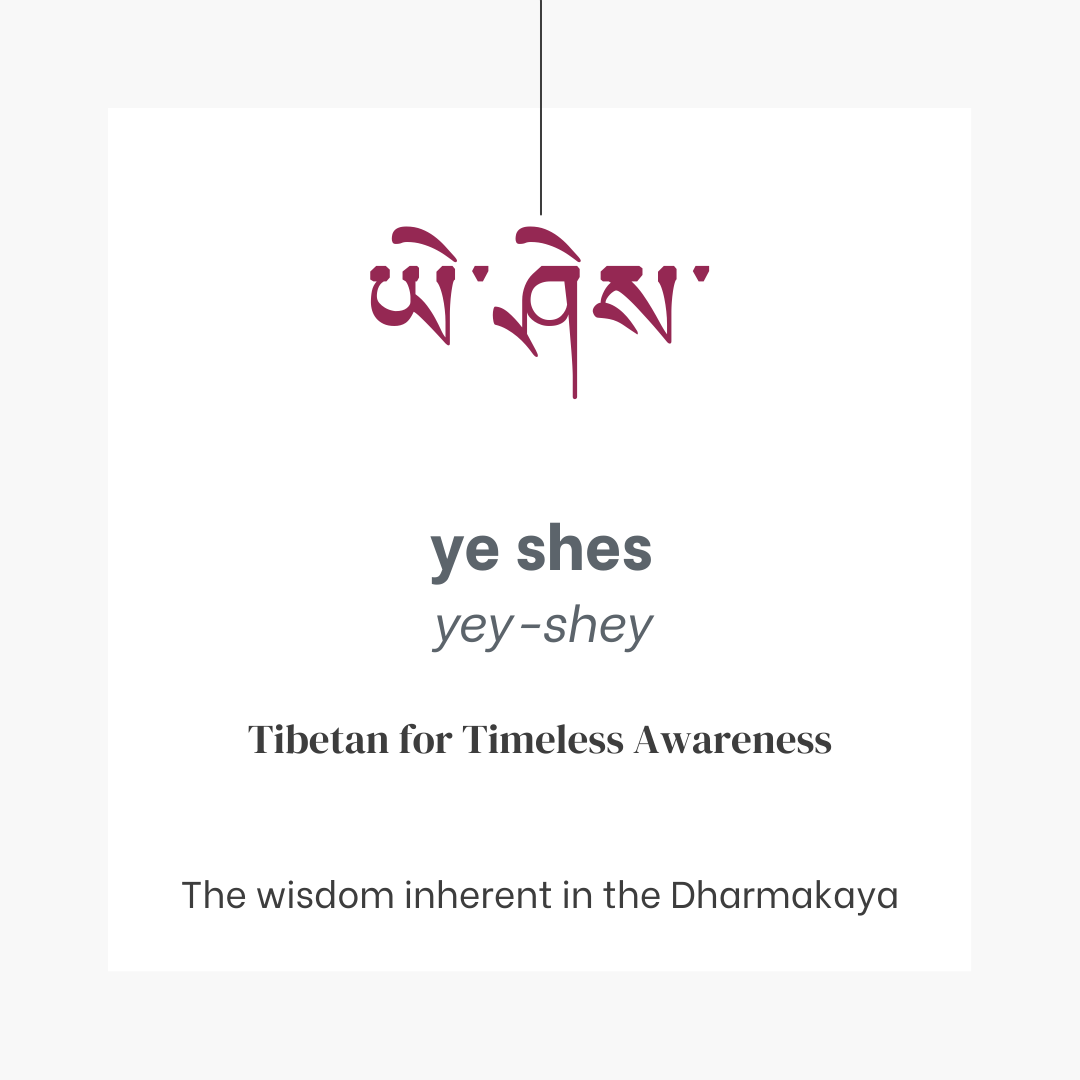
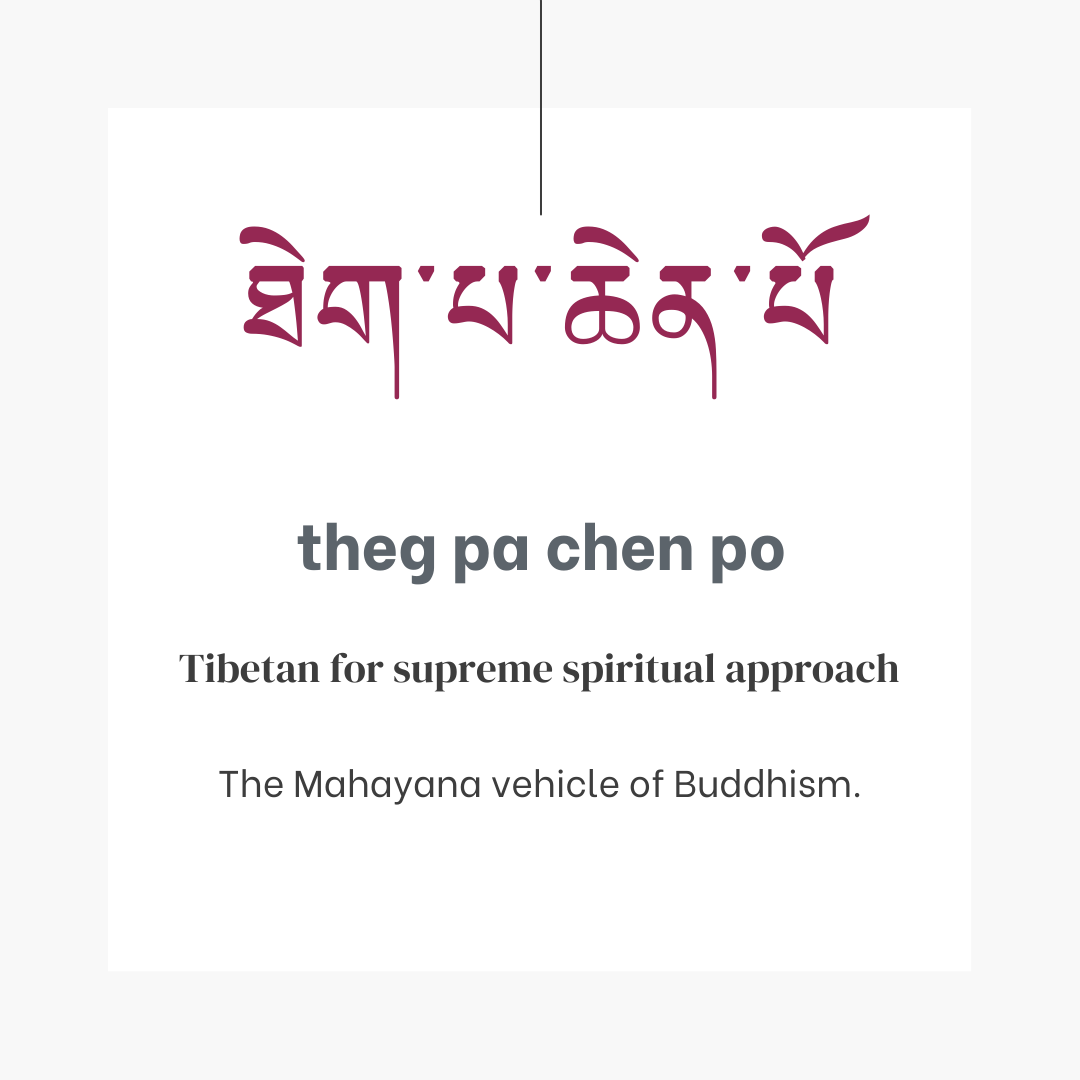
Supreme Spiritual Approach
Wylie: theg pa chen po
Tibetan: ཐེག་པ་ཆེན་པོ་
Phonetics: tek-pa chen-po
Definition: The Mahayana vehicle of Buddhism.
After the Buddha passed into nirvana, Mahayana and Theravada Buddhism became the two prevalent paths that spread throughout Asia. There are many differences between the two traditions, and depending on who you ask, those differences can be tremendous or quite small. The primary differences are matters of emphasis or the particulars of how selflessness is discussed or meditated upon. All three forms of Buddhism are based on the Four Noble Truths.
Mahayana mainly spread to Nepal, Tibet, China, Japan, Korea, Mongolia, and Vietnam.
The emphasis of this path is applying antidotes to afflictive emotions or poisons. This path is guided by the Six Perfections.
(Sanskrit; “Great Vehicle”): This branch of Buddhism has two purposes as motivating factors: Enlightenment for self and enlightenment for others. In every school of Mahayana, one takes a vow to help all beings toward enlightenment. Bodhicitta, or the mind of enlightenment, is the primary cause of enlightenment in the Mahayana. It is the wish to attain enlightenment to free all beings from suffering. So, no matter what practices you may engage in, if you do them with the motivation of bodhicitta, you are practicing a Mahayana path.
The Mahayana tradition accepts the validity of all the Theravada teachings, such as the Eightfold Noble Path. Still, it considers that those teachings were taught to a specific group of disciples in a particular place and time. At other times, the Buddha taught the Mahayana path with its own particular aspects and emphasis, which are the ones that they take as being of primary importance.
Sublime Spiritual Approach
Wylie: theg pa mchog
Tibetan: ཐེག་པ་མཆོག་
Phonetics: tek-pa chok
Definition: The Great Perfection/Dzogchen/Atiyoga
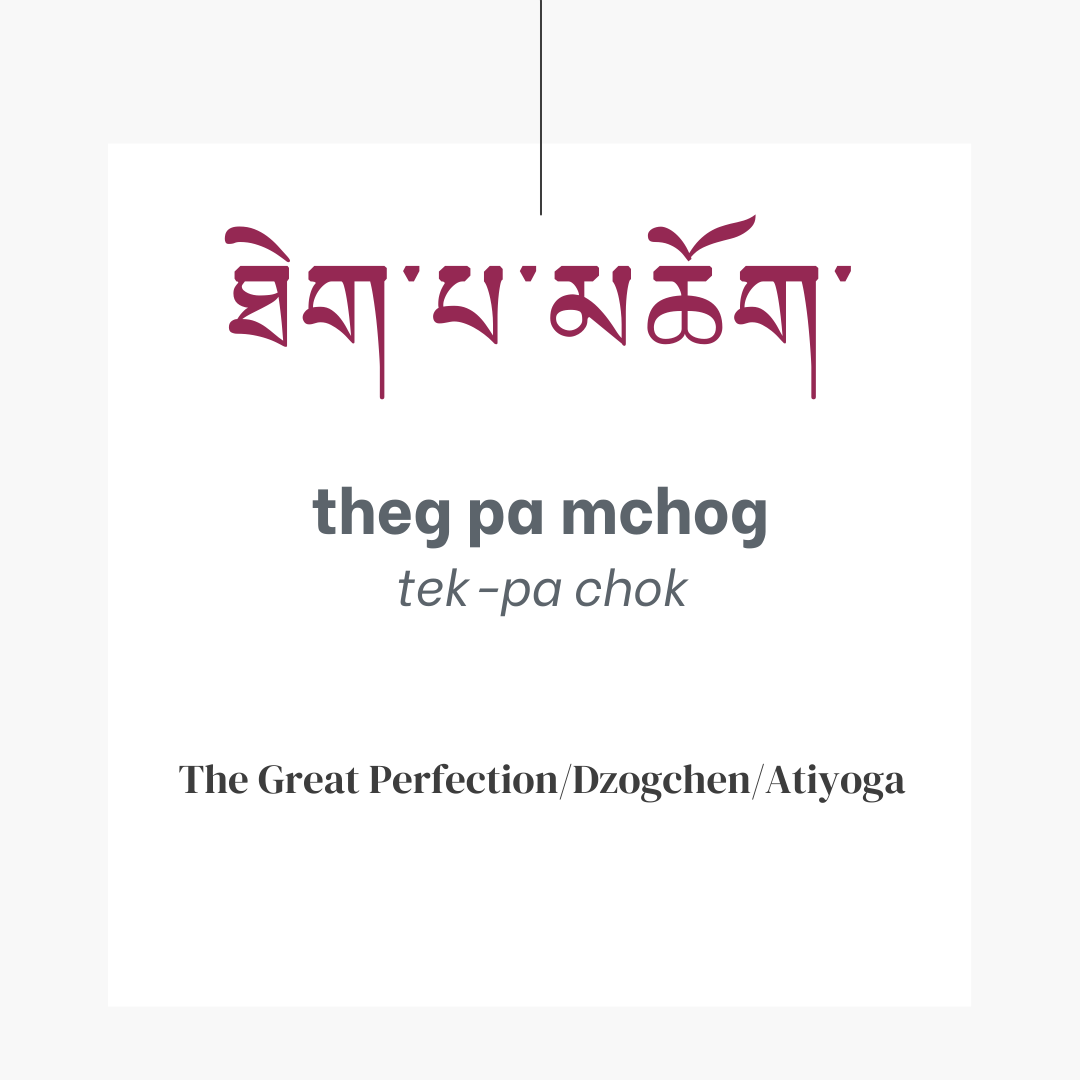
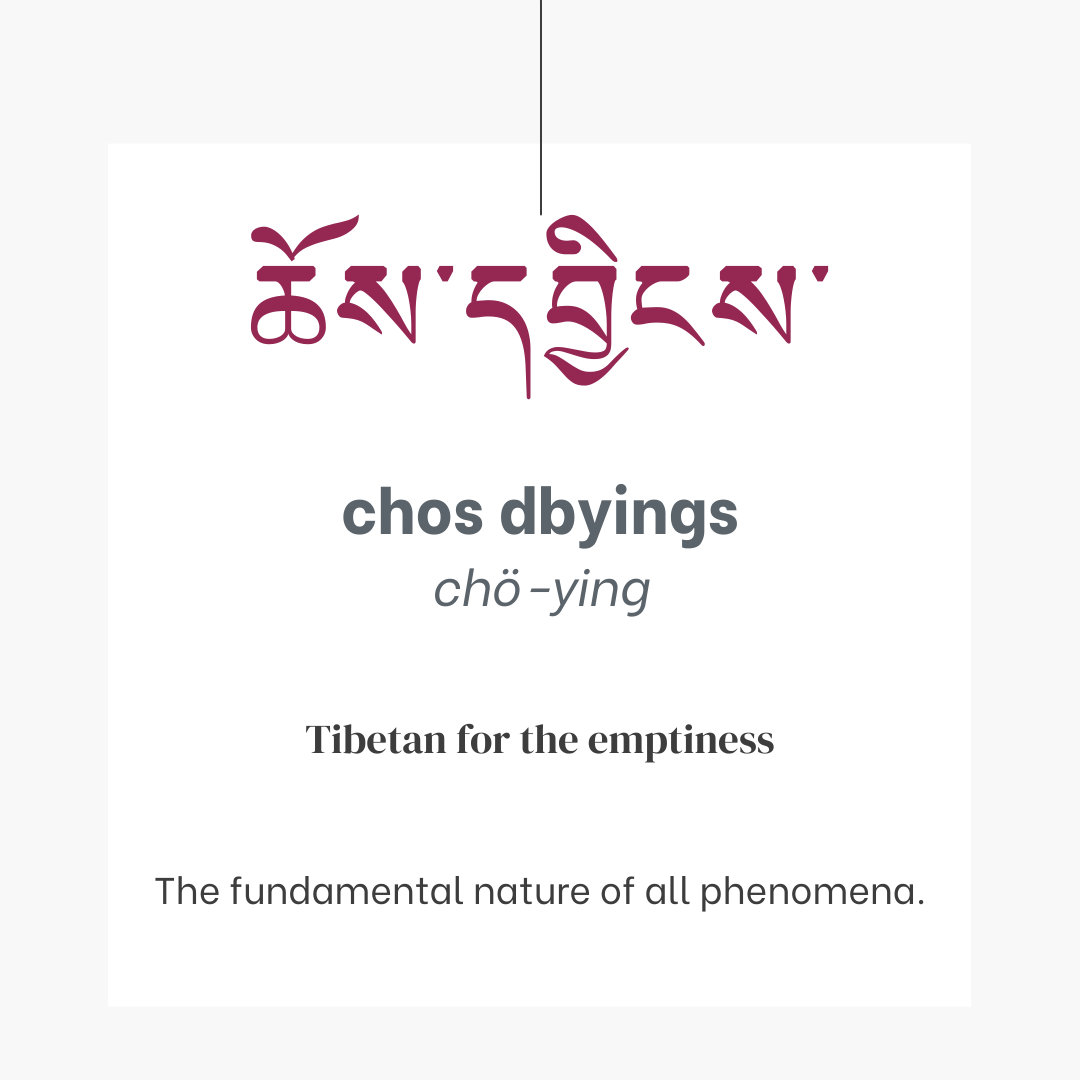
Basic Space of Phenomena
Wylie: chos dbyings
Tibetan: ཆོས་དབྱིངས་
Phonetics: chö-ying
Definition:
Synonymous with suchness or emptiness, it is the fundamental nature of all phenomena.
The word “phenomena” makes us think of extraordinary or impressive people or supernatural events. In this context, phenomena refer to the observable occurrences or circumstances around us. They could be extraordinary, or they could be everyday occurrences.
If everything around us is occurring in a cause-and-effect process, there is nothing solidly existing to grasp. As we meditate on this impermanent existence of phenomena, our likes and dislike can slowly melt away.
Uncontrived or Reoriented Conduct
Wylie: brtul zhugs
Tibetan: བརྟུལ་ཞུགས་
Phonetics: tul-zhuk
Definition:
To leave behind an old way of being or behaving and enter or begin a new way. Figuratively “turning over a new leaf.”
The Buddha is a prime example of this. Did you know that prior to becoming the Buddha, he was a prince named Siddhartha? He left his royal life on a quest for enlightenment, which he did eventually find. Read the full story of his transformation in From Prince to Buddha by Lama Tsomo.

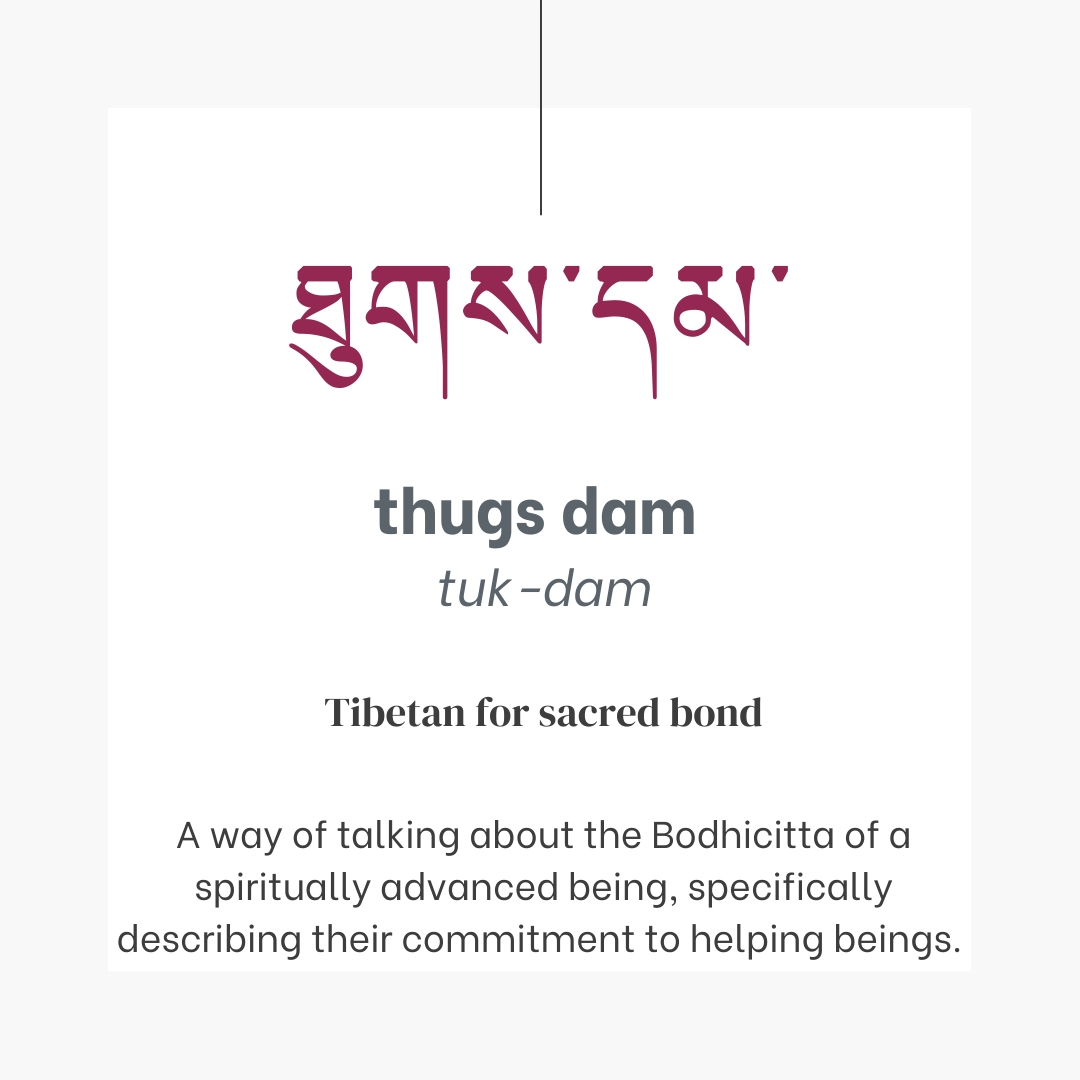
Sacred Bond
Wylie: thugs dam
Tibetan: ཐུགས་དམ་
Phonetics: tuk-dam
Definition:
A way of talking about the bodhicitta of a spiritually advanced being, it describes their commitment to helping beings. We can invoke their sacred bond through ritual practices.
Bodhicitta is the mind of enlightenment. There are two kinds of bodhicitta: conventional and ultimate. Conventional bodhicitta is a mind that wishes to free beings from suffering and bring them to a state of enlightenment. The second definition of bodhicitta is ultimate bodhicitta, which is a mind that has realized emptiness.

